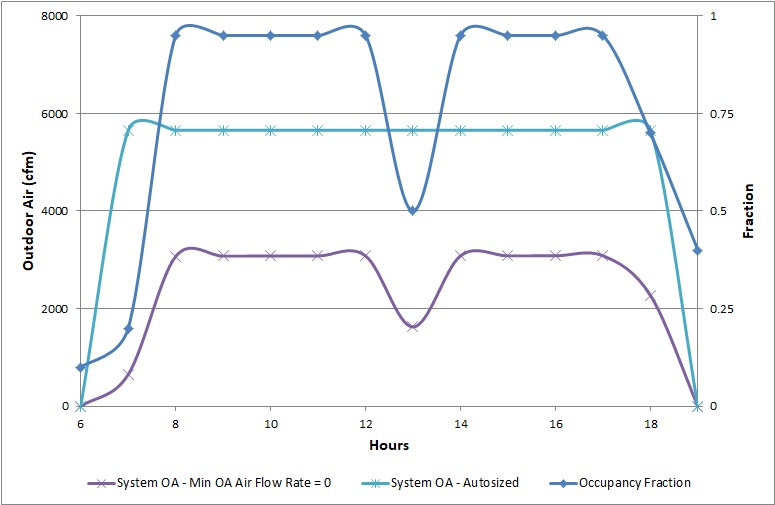OA autosized using VRP and DCV
I need to model demand control ventilation in a model where the OA is autosized using the ventilation rate procedure.
If I run the model with Demand Controlled Ventilation set to No in the Controller:MechanicalVentilation object, the OA provided by the system matches the Standard 62.1 report and matches my manual calculation.
If I run the model with Demand Controlled Ventilation set to Yes in the Controller:MechanicalVentilation object, nothing changes. The OA provided by the system is unchanged.
I came across this issue on Github. It seems to me that 2. is exactly what is going in my model. I've tried to set the Minimum Outdoor Air Flow Rate in the Controller:OutdoorAir object to 0 so the OA flow rate calculated by the VRP doesn't prevent DCV.
The results show that DCV is working but the hourly OA quantities at maximum occupancy (schedule fraction = 0.95) is about 60% of the flow calculated following the VRP. Where is the difference coming from?






Which "System Outdoor Air Method" did you specify in the
Controller:Mechanical Ventilationobject? VRP, I assume? When you say, "...is about 60% of the flow calculated following the VRP," is that based on a VRP calculation at design conditions, or on a VRP calculation that is dynamic based on the simulated dynamic values for outside air, primary air at the connected zones?It doesn't make sense to me that the minimum airflow fraction would change depending on whether "minimum outside airflow rate" is autosized. Any thoughts on why that is? How is the minimum flow fraction specified? And, is your total system flow the same in both the cases shown in the graph?
@Molly Curtz, I found out what was going on with the minimum airflow fraction, a
DesignSpecification:OutdoorAirobject was inadvertently attached the the air terminal.